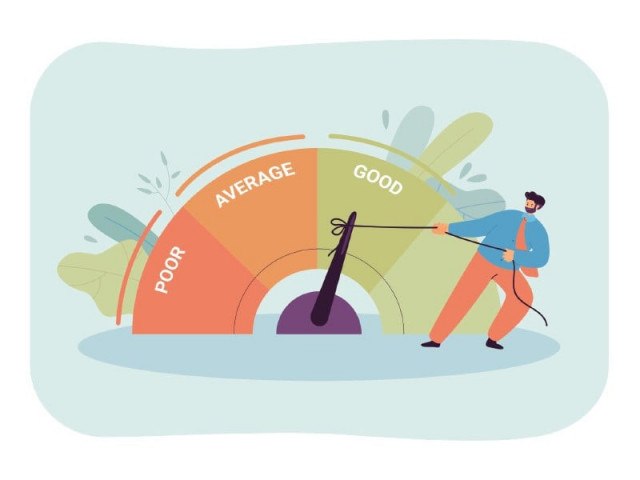Moody's upgrades Pakistan's rating
Positive outlook comes as IMF programme nears, signals reduced default risk

Moody's Ratings has upgraded Pakistan's local and foreign currency issuer and senior unsecured debt rating to 'Caa2' from 'Caa3,' raising the outlook to positive from stable. This upgrade comes just weeks ahead of Pakistan's expected $7 billion International Monetary Fund (IMF) loan programme, signalling that the country's risk of default on foreign debt repayments has lessened despite ongoing governance issues and political instability.
This move by one of the world's top three rating agencies has renewed foreign investor confidence in Pakistan's economy, potentially opening the door for the country to return to global capital markets. Pakistan could now raise new foreign debt financing by selling Panda bonds, Eurobonds, and Sukuk at relatively lower costs.
In July, Fitch Ratings also upgraded Pakistan's credit rating, marking the second upward revision by the agency within a year. S&P Global is expected to follow suit soon.
In a detailed rating analysis, Moody's explained that the upgrade to 'Caa2' reflects Pakistan's improving macroeconomic conditions, as well as moderately better government liquidity and external positions compared to previously very weak levels.
"Accordingly, Pakistan's default risk has reduced to a level consistent with a Caa2 rating. There is now greater certainty on Pakistan's sources of external financing, following the sovereign's staff-level agreement with the IMF on July 12, 2024, for a 37-month Extended Fund Facility (EFF) of $7 billion," Moody's said. The agency anticipates the IMF Board will approve the EFF within weeks.
Pakistan's foreign exchange reserves have nearly doubled to $9.3 billion since June 2023, although they remain below the levels needed to meet the country's external financing demands. The country remains dependent on timely financing from official partners to meet its external debt obligations fully.
"The governments of Saudi Arabia and the United Arab Emirates have collectively pledged to invest $15 billion in Pakistan, which, if realised, would significantly boost Pakistan's foreign exchange reserves. Additionally, the government aims to broaden its revenue base through measures such as increasing taxes on the agriculture, retail, and export sectors. If implemented and sustained, these measures could improve Pakistan's debt affordability beyond our current forecasts."
However, Moody's cautioned that Pakistan's 'Caa2' rating still reflects the country's very weak debt affordability, which poses significant debt sustainability risks. "We expect interest payments to continue absorbing about half of government revenue over the next two to three years. The 'Caa2' rating also incorporates the country's weak governance and high political uncertainty."
The positive outlook reflects a balance of risks, with a tilt toward potential improvement. It accounts for the possibility that the government could further reduce its liquidity and external vulnerability risks and achieve a better fiscal position than currently expected, supported by the IMF programme.
Sustained reform implementation, including revenue-raising measures, could expand the government's revenue base and improve Pakistan's debt affordability. A track record of timely IMF reviews would enable Pakistan to unlock financing from official partners, sufficient to meet its external debt obligations and support further rebuilding of its foreign exchange reserves.
Explaining the rationale for its upgrade, Moody's said that its earlier concerns over the very high risks of a balance of payments crisis have eased, although risks remain elevated. Pakistan's continued reliance on timely and sufficient financing from official partners remains crucial.
"There is now greater certainty over Pakistan's sources of financing to meet its needs over the next two to three years, following the IMF staff-level agreement. The IMF programme is likely to help Pakistan unlock additional financing from other multilateral and bilateral partners."
Moody's estimates that Pakistan's external financing needs will be around $26 billion for fiscal 2025 (ending June 2025), including approximately $22 billion in external principal debt repayments and another $4 billion (about 1% of GDP) to finance the current account deficit. Pakistan's financing needs for fiscal 2026-2027 are expected to be similar.
Moody's expects Pakistan to meet these financing needs through support from official partners, though there is uncertainty about the government's ability to maintain reform efforts. "The coalition government formed after elections in February 2024 may not have a strong enough electoral mandate to implement revenue-raising measures without triggering social unrest. Slippages in reform implementation could delay or derail financing support from official partners."
The government projects its fiscal deficit to be 5.9% of GDP, with a primary surplus of 2% for fiscal 2025 (compared to a 6.8% deficit and 0.9% surplus for fiscal 2024). "We expect the pace of fiscal consolidation to be slower than the government anticipates. We project a larger fiscal deficit of about 6.5% of GDP and a smaller primary surplus of around 0.5-1% of GDP for fiscal 2025."
The rating upgrade to 'Caa2' from 'Caa3' also applies to the backed foreign currency senior unsecured ratings for The Pakistan Global Sukuk Programme Co Ltd. According to Moody's, the associated payment obligations are considered direct obligations of the government of Pakistan, and the outlook for the programme is positive.


















COMMENTS
Comments are moderated and generally will be posted if they are on-topic and not abusive.
For more information, please see our Comments FAQ